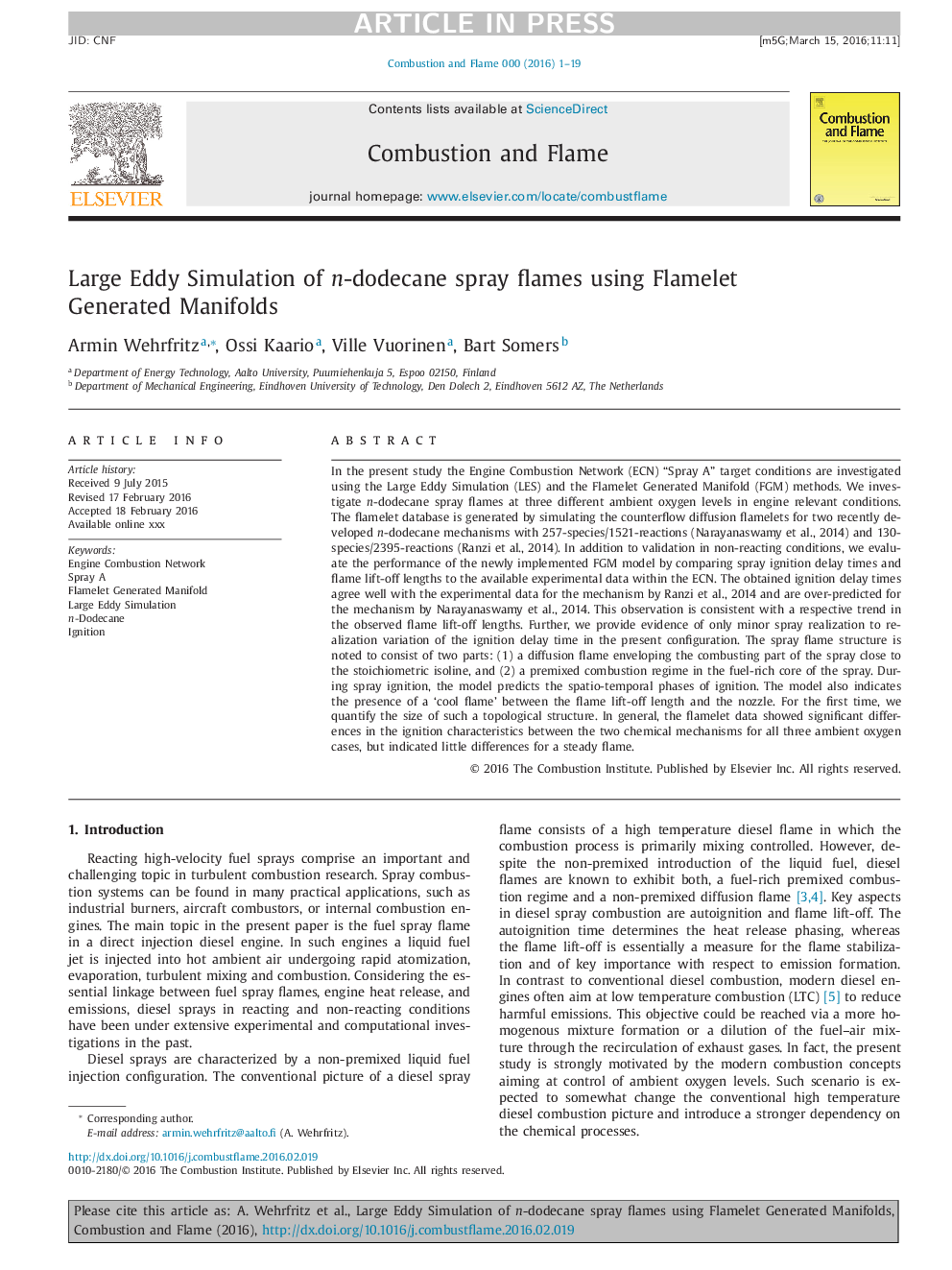| Article ID | Journal | Published Year | Pages | File Type |
|---|---|---|---|---|
| 6594089 | Combustion and Flame | 2016 | 19 Pages |
Abstract
In the present study the Engine Combustion Network (ECN) “Spray A” target conditions are investigated using the Large Eddy Simulation (LES) and the Flamelet Generated Manifold (FGM) methods. We investigate n-dodecane spray flames at three different ambient oxygen levels in engine relevant conditions. The flamelet database is generated by simulating the counterflow diffusion flamelets for two recently developed n-dodecane mechanisms with 257-species/1521-reactions (Narayanaswamy et al., 2014) and 130-species/2395-reactions (Ranzi et al., 2014). In addition to validation in non-reacting conditions, we evaluate the performance of the newly implemented FGM model by comparing spray ignition delay times and flame lift-off lengths to the available experimental data within the ECN. The obtained ignition delay times agree well with the experimental data for the mechanism by Ranzi et al., 2014 and are over-predicted for the mechanism by Narayanaswamy et al., 2014. This observation is consistent with a respective trend in the observed flame lift-off lengths. Further, we provide evidence of only minor spray realization to realization variation of the ignition delay time in the present configuration. The spray flame structure is noted to consist of two parts: (1) a diffusion flame enveloping the combusting part of the spray close to the stoichiometric isoline, and (2) a premixed combustion regime in the fuel-rich core of the spray. During spray ignition, the model predicts the spatio-temporal phases of ignition. The model also indicates the presence of a 'cool flame' between the flame lift-off length and the nozzle. For the first time, we quantify the size of such a topological structure. In general, the flamelet data showed significant differences in the ignition characteristics between the two chemical mechanisms for all three ambient oxygen cases, but indicated little differences for a steady flame.
Keywords
Related Topics
Physical Sciences and Engineering
Chemical Engineering
Chemical Engineering (General)
Authors
Armin Wehrfritz, Ossi Kaario, Ville Vuorinen, Bart Somers,
